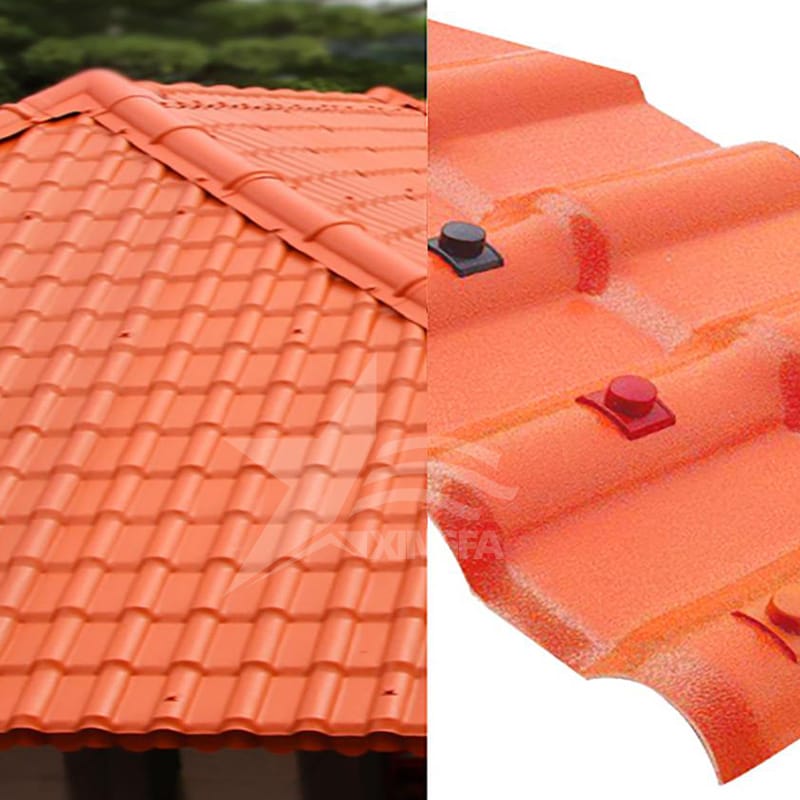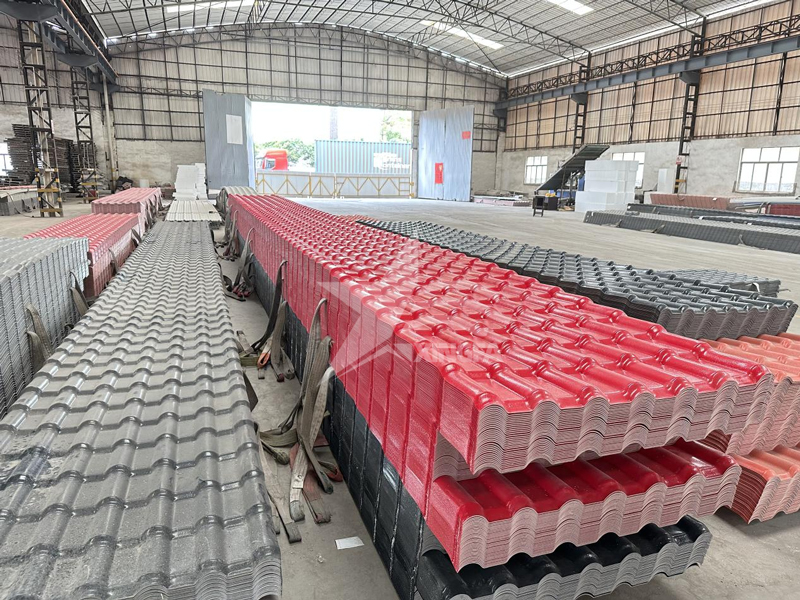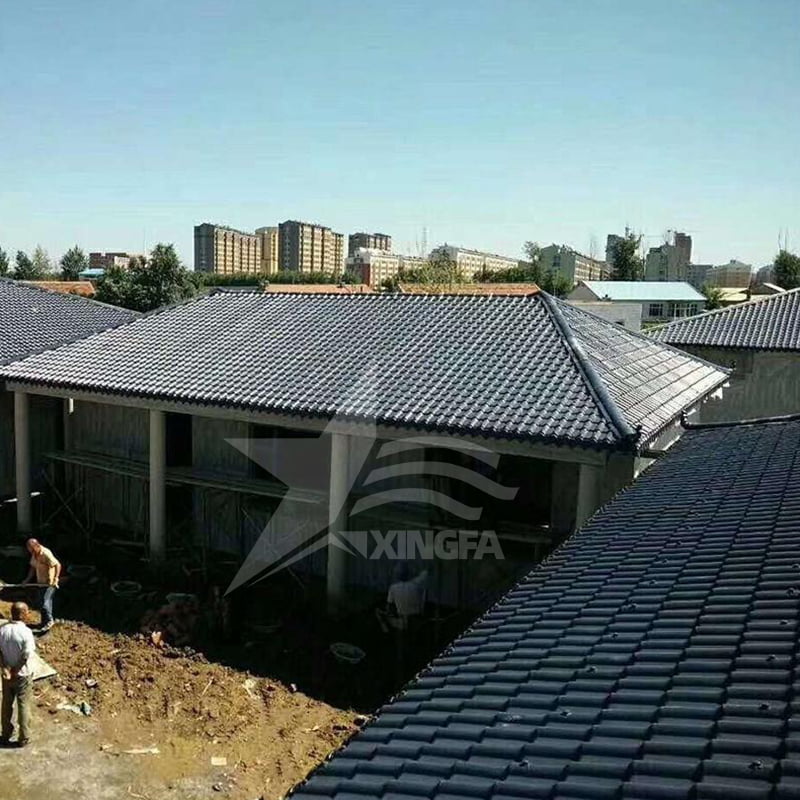Today, synthetic resin tiles have become widely popular in the construction industry, thanks to their unique functional advantages that make them suitable for various types of building roofs. So, what are these advantages of synthetic resin tiles, and where exactly can they be used on building roofs? Let’s explore them together.

Firstly, let’s understand the advantages of synthetic resin tiles:
- Weather Resistance: Synthetic resin tiles exhibit excellent weather resistance, capable of long-term use under different climate conditions without fading or deteriorating.
- Corrosion Resistance: This material demonstrates strong resistance to acids, alkalis, salts, moisture, making it suitable for buildings in coastal or highly corrosive environments.
- Impact Resistance: Synthetic resin tiles have robust impact resistance, able to withstand external impacts without cracking or damage.
- Fire Resistance: They are categorized as flame-retardant products, enhancing the fire resistance of buildings and contributing to the safety of occupants.
- Waterproofing: Due to their large single-piece area and minimal installation joints, synthetic resin tiles provide effective waterproofing, reducing the risk of leakage.
- Ease of Installation: Their lightweight nature and durability make them easy to transport and install. The large-scale covering installation method further facilitates a quick and convenient installation process.

In summary, the functional advantages and versatility of synthetic resin tiles make them a multifunctional roofing material that can meet the diverse needs of various construction projects.
Where can synthetic resin tiles be used?
Residential Buildings: Rooftops of self-built houses, villas, apartments, etc.
Commercial Buildings: Rooftops of shopping malls, office buildings, restaurants, etc.
Industrial Buildings: Rooftops of factories, warehouses, workshops, etc.
Public Buildings: Rooftops of schools, hospitals, libraries, etc.
Agricultural Buildings: Rooftops of agricultural greenhouses, livestock shelters, etc.

Cultural Buildings: Rooftops of historical buildings, museums, theaters, etc.










